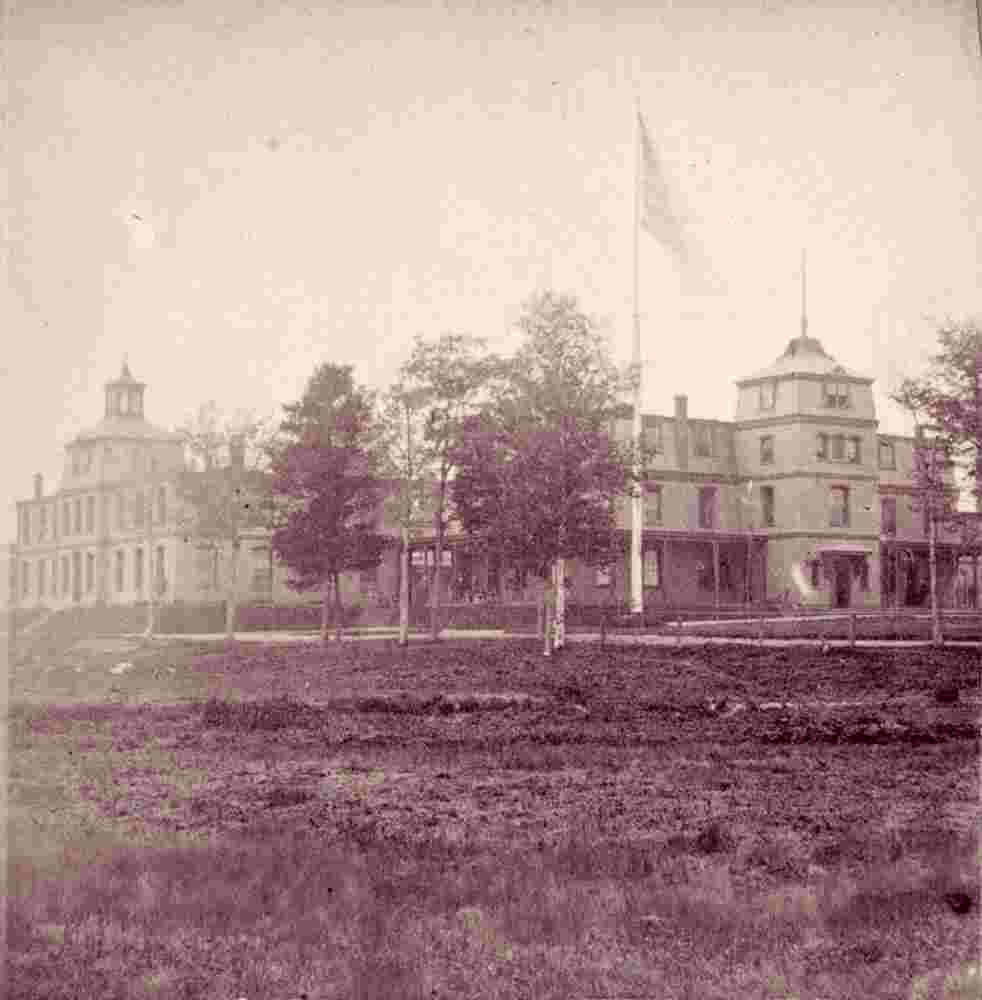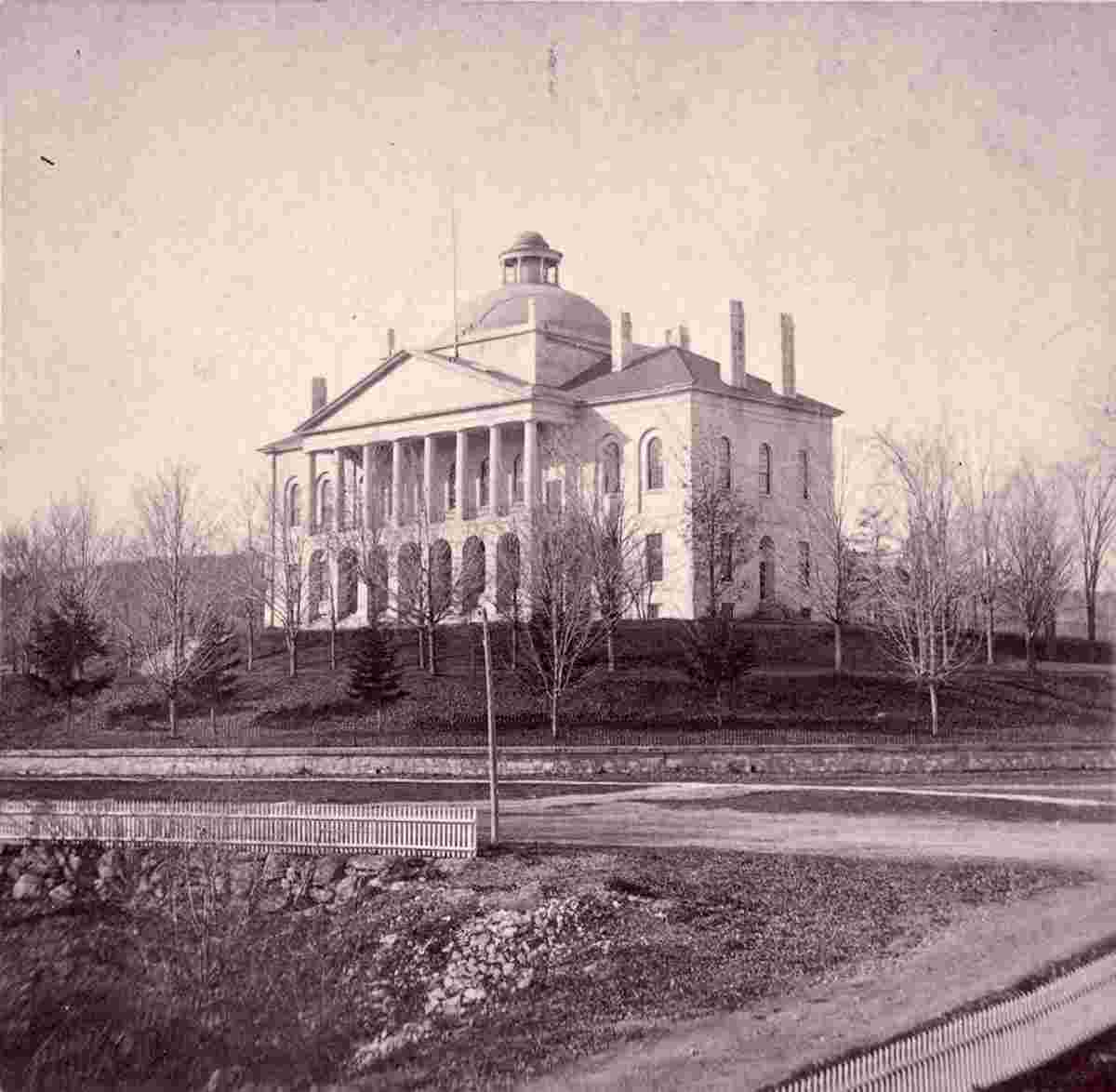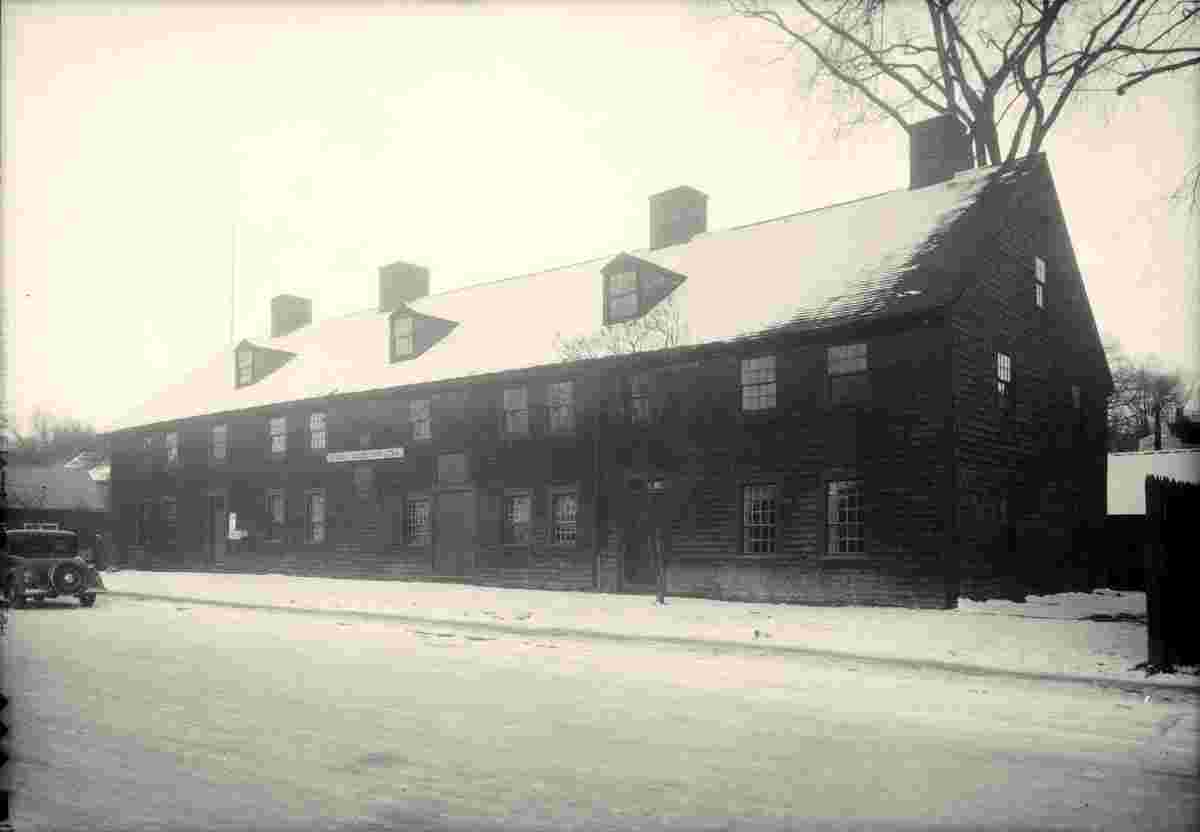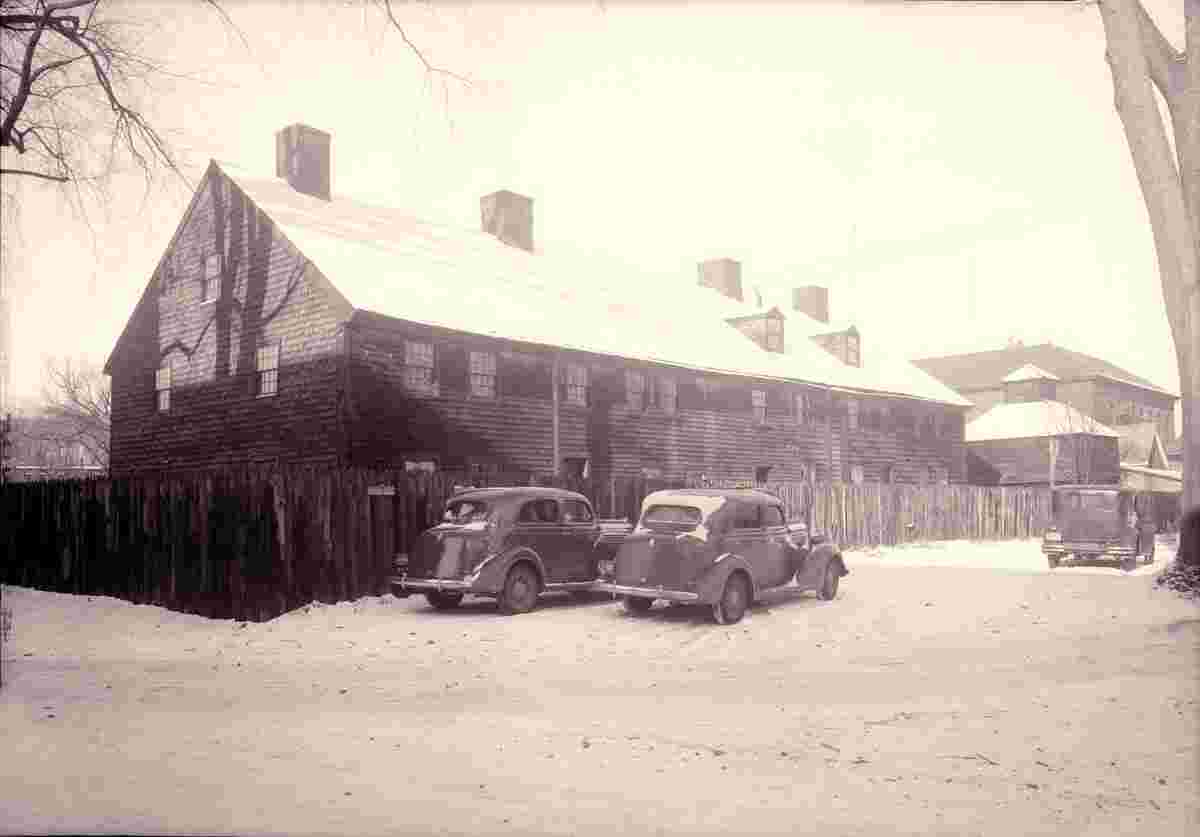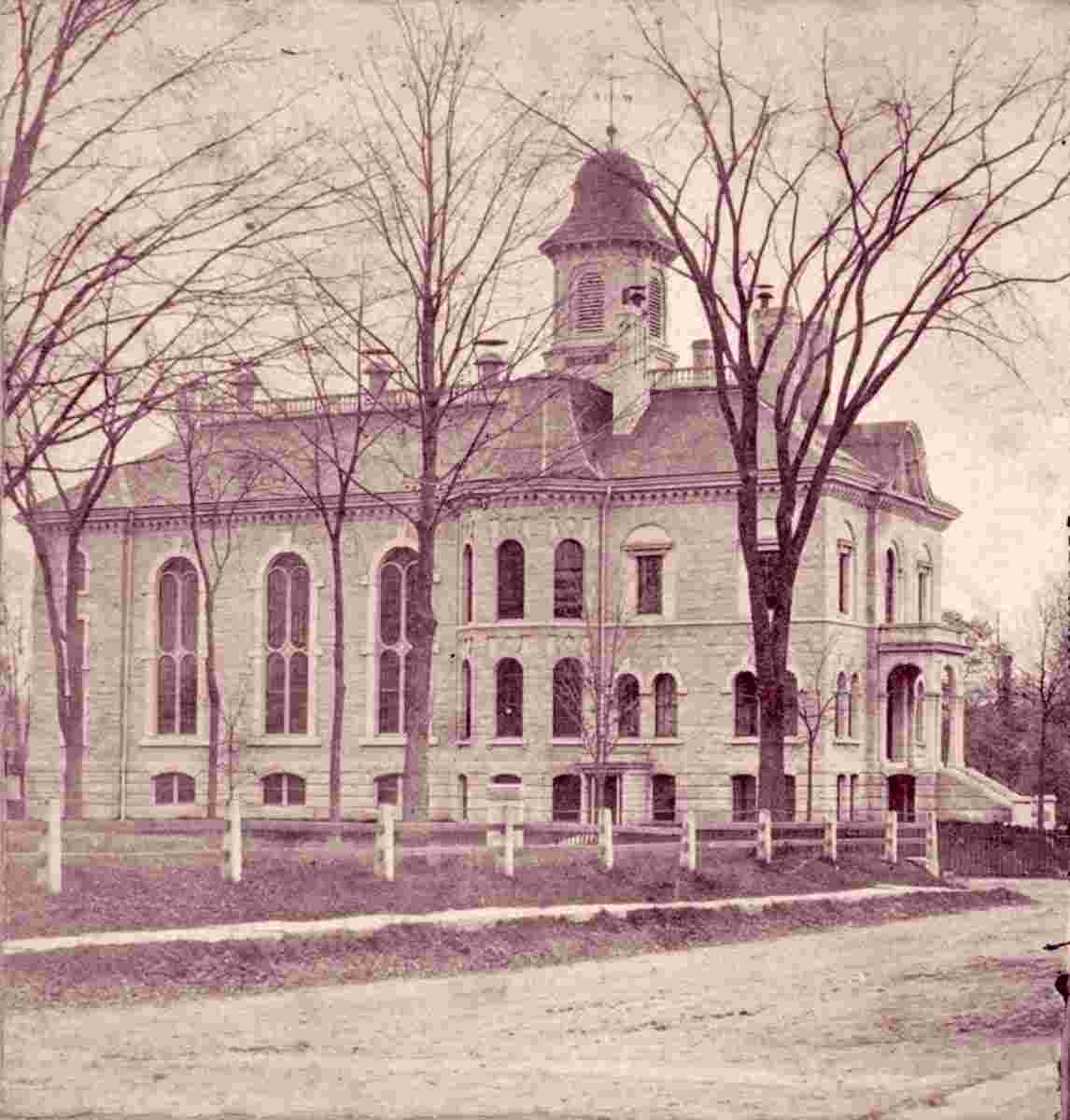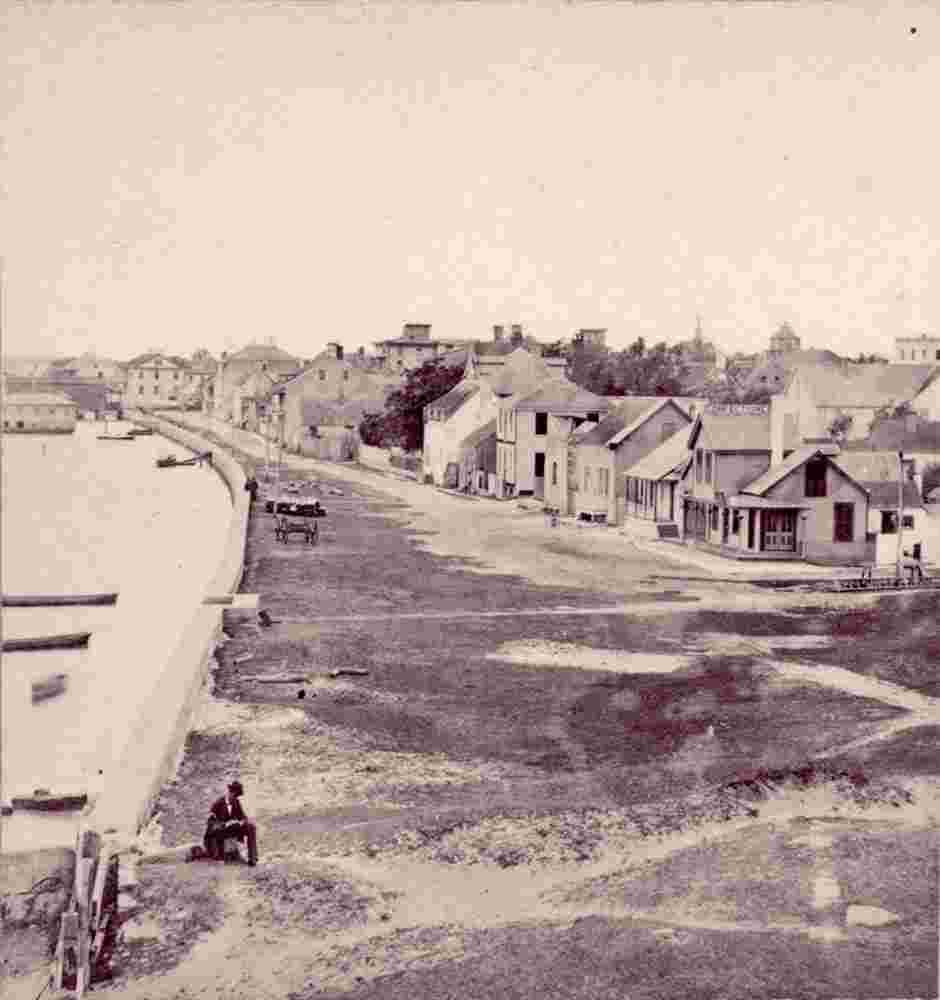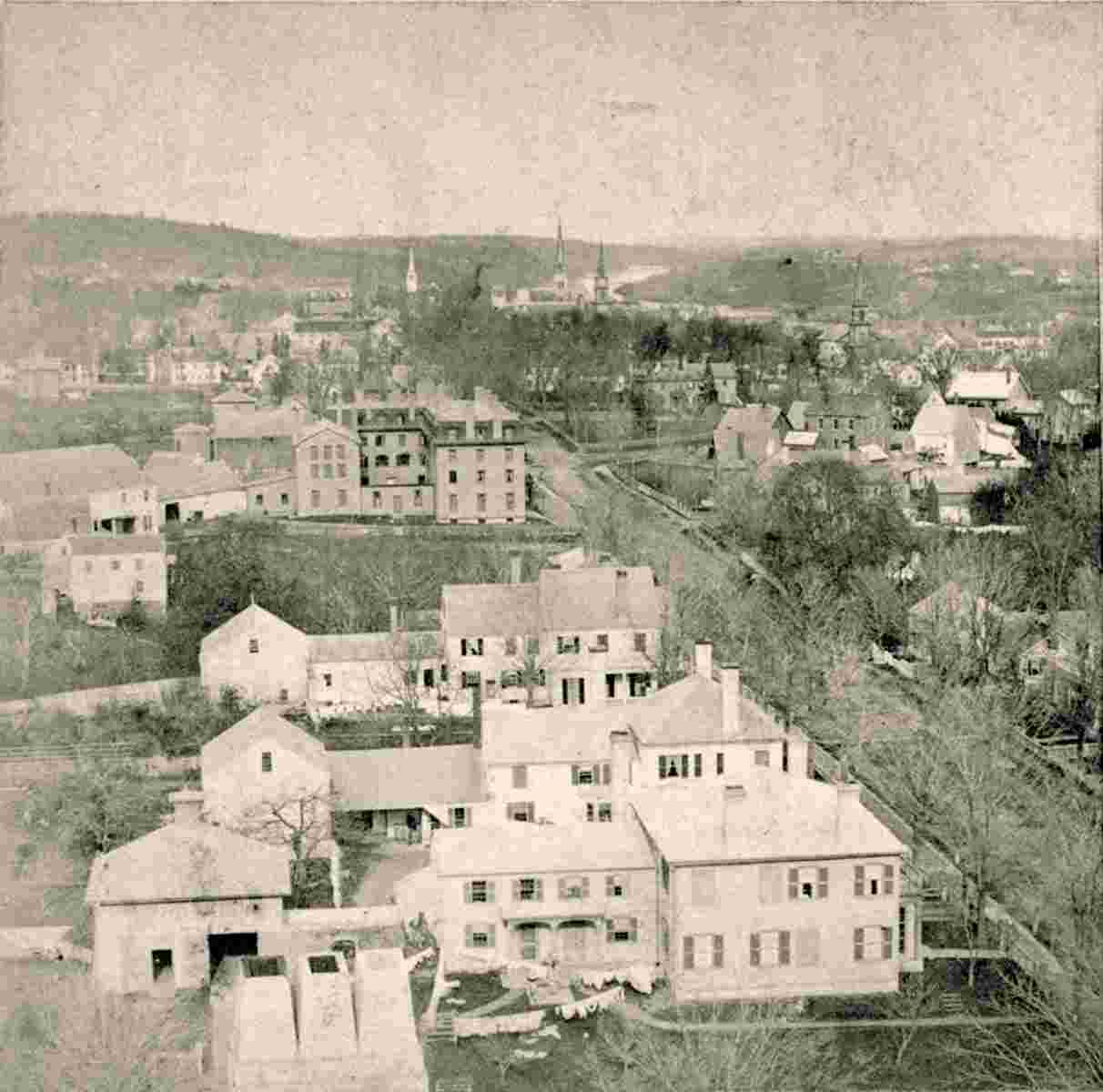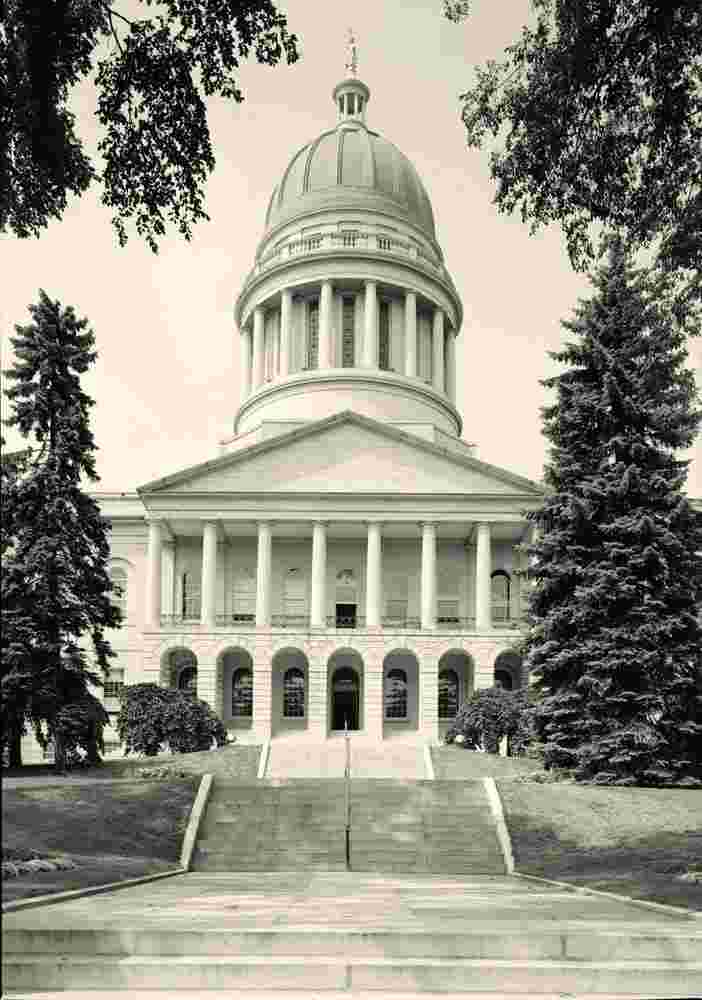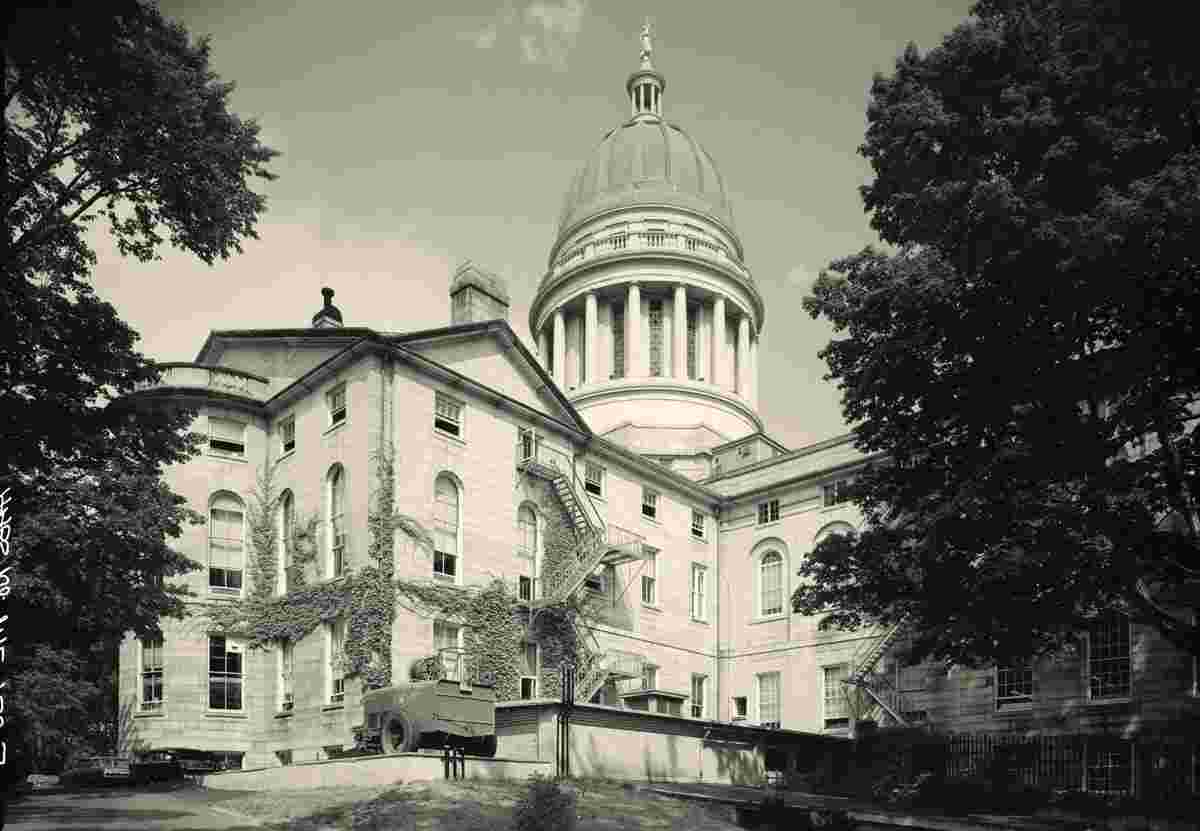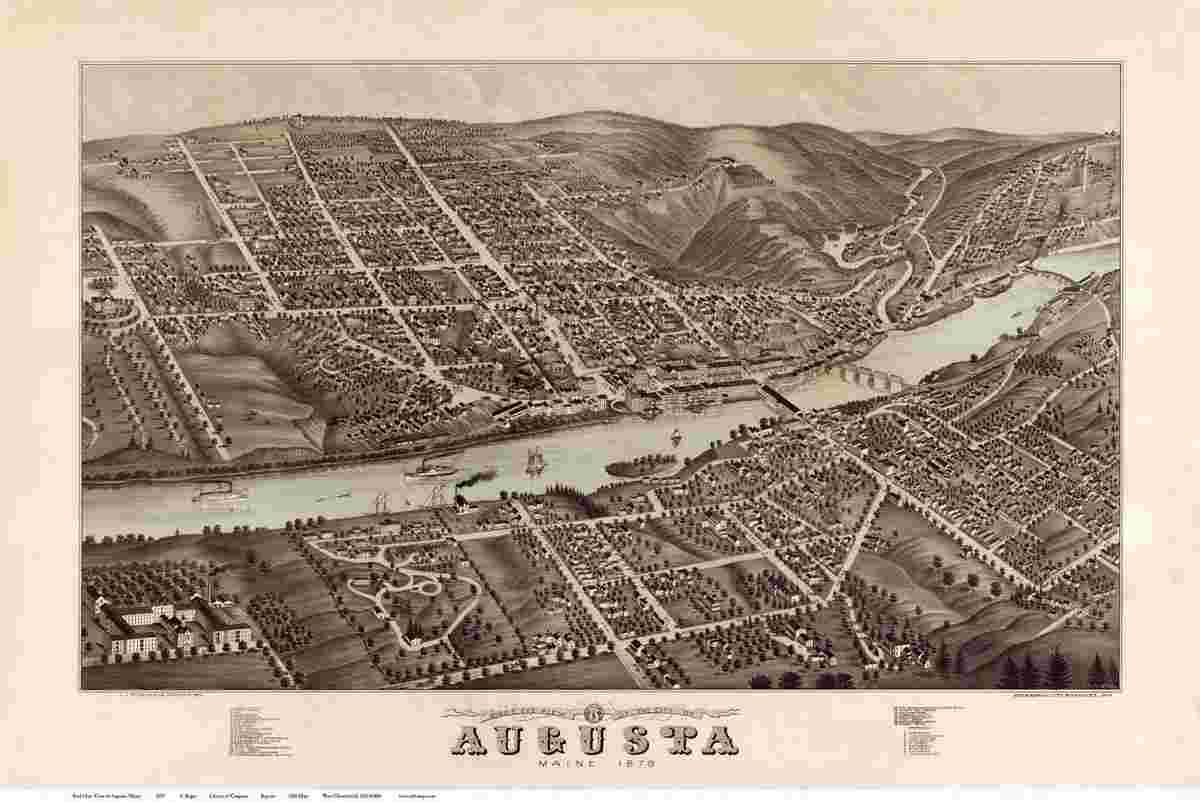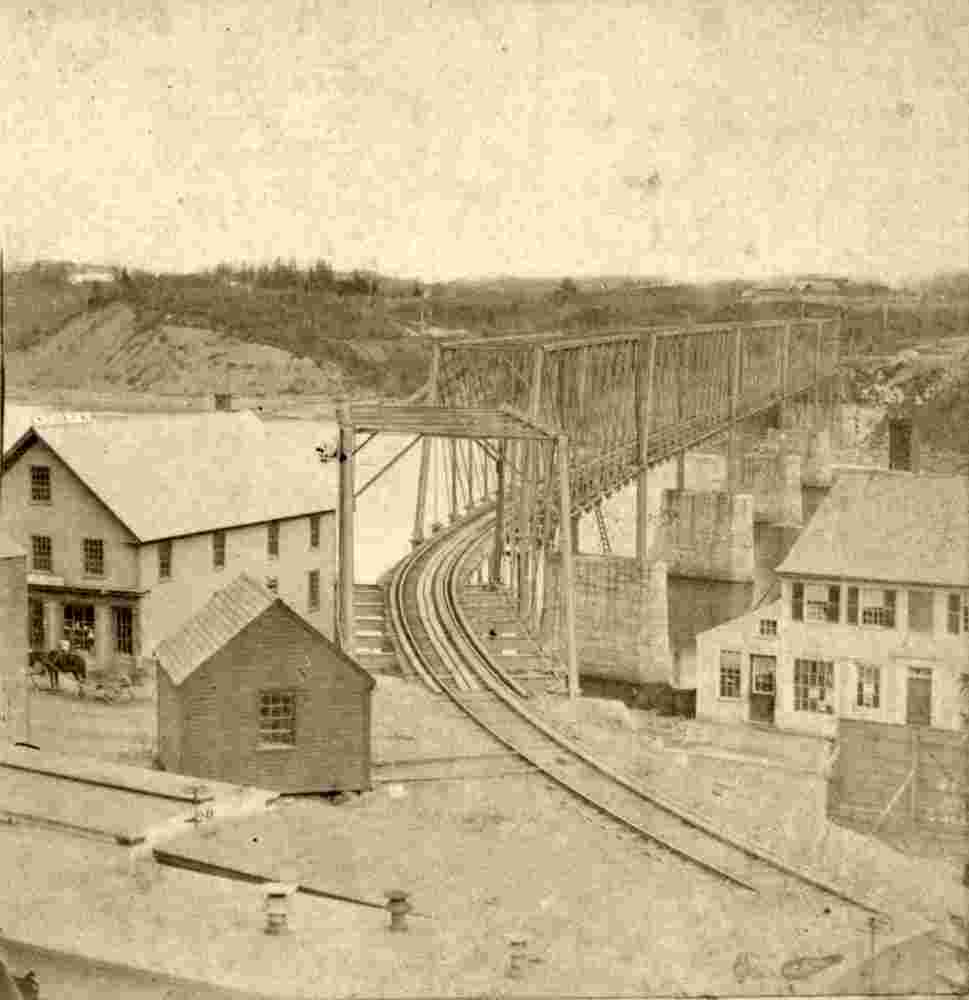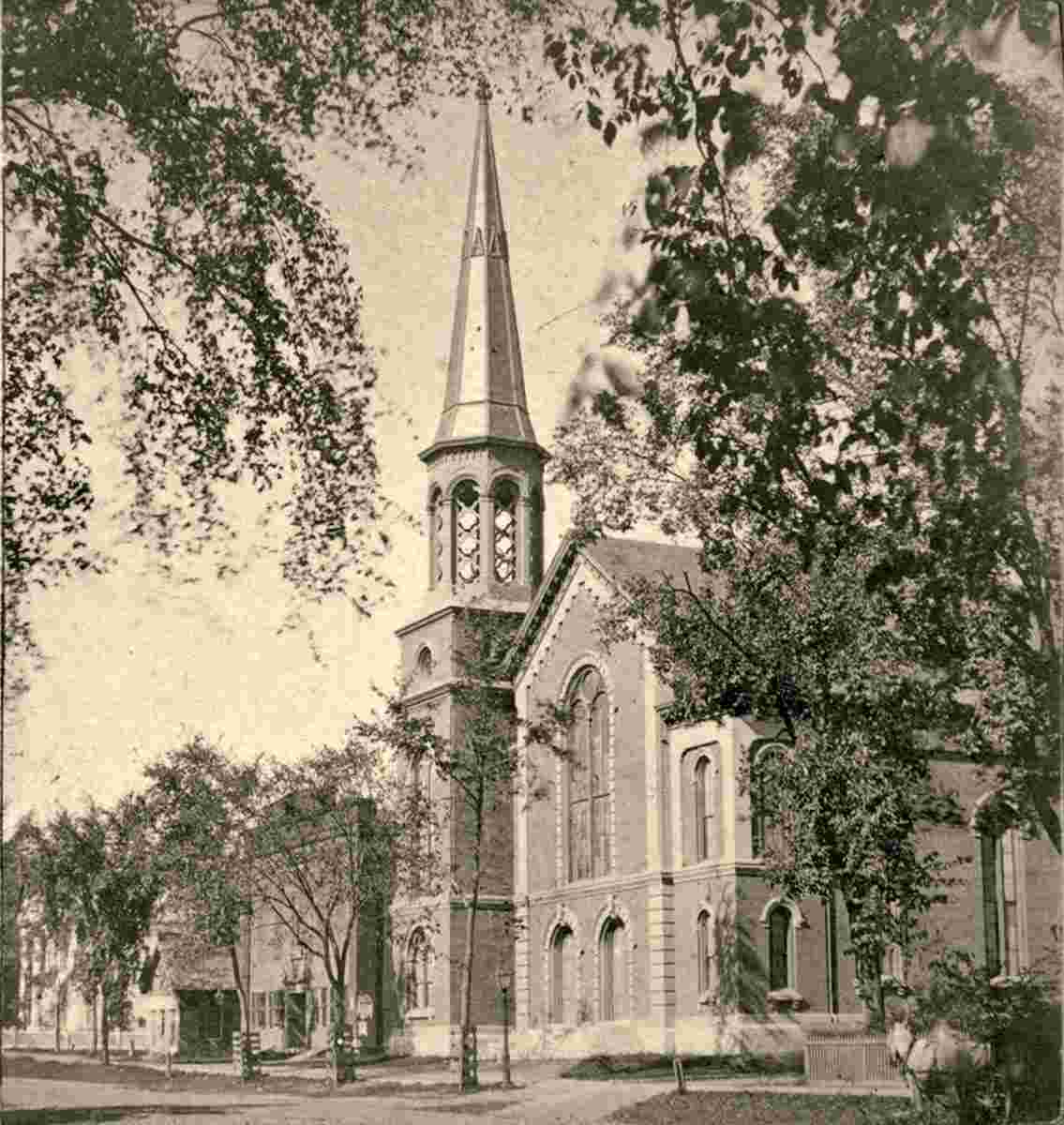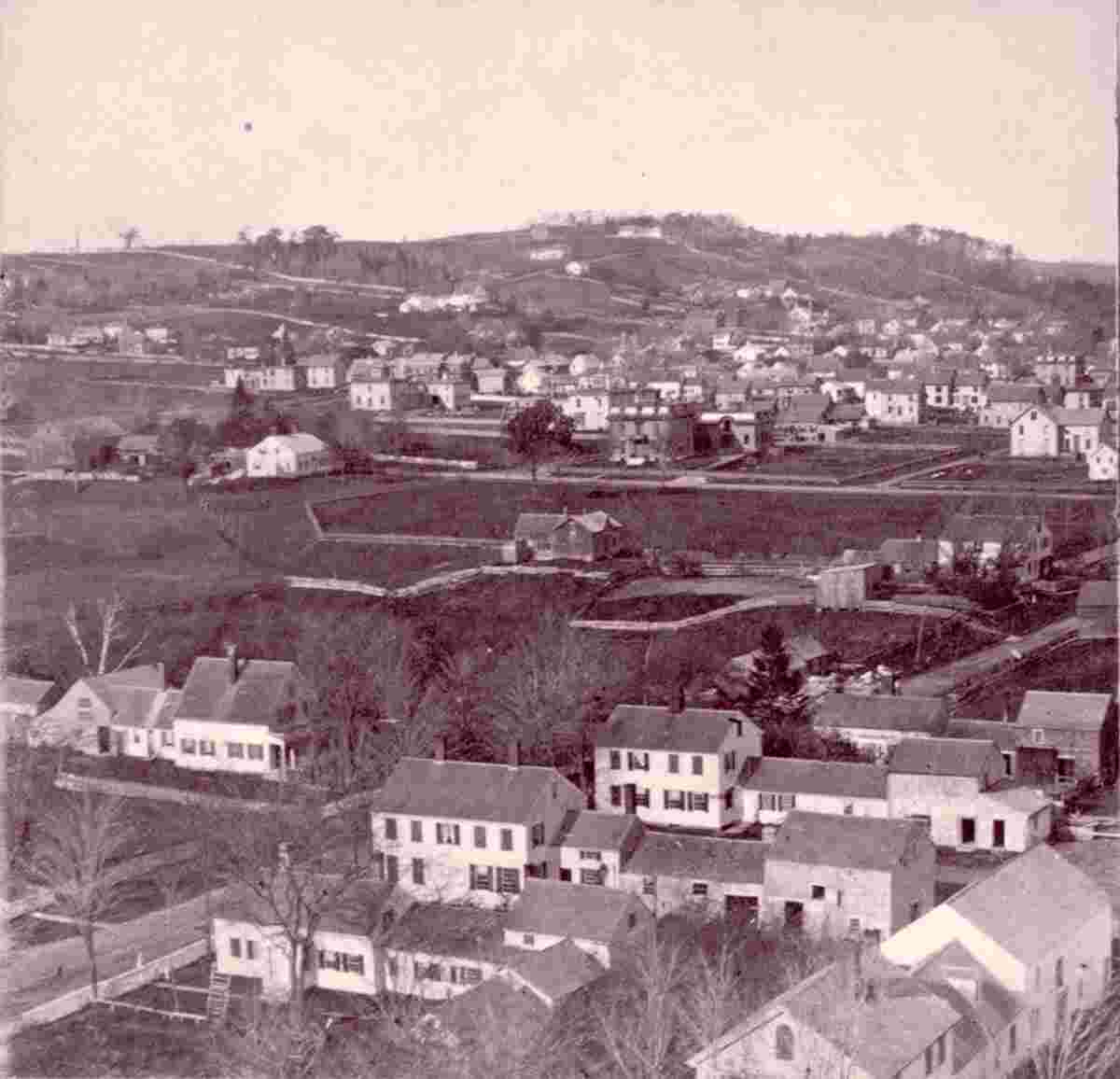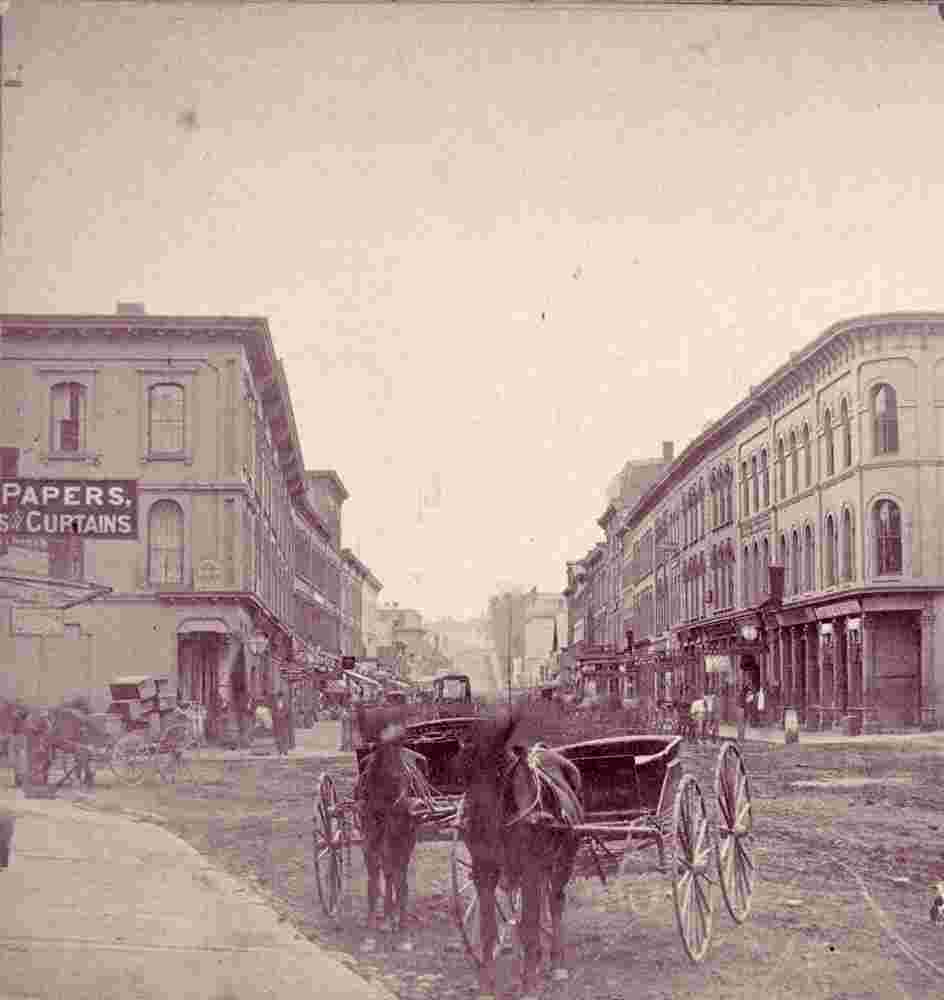History of city Augusta, Maine in photos
Augusta's BeginningsLong before Europeans came up the Kennebec River to the "head of the tide" Algonquian-speaking Indians, considered Wabanaki or "People of the Dawn" were already here. As early as 1607 the area was explored by English settlers from the short-lived Sagadahoc or Popham Colony at the river’s mouth. Representatives of Plymouth Colony were the first English to actually live here. In 1625, on a river expedition to find a place to trade agricultural products for Indian furs, Plymouth pilgrims chose the east shore for their "House at Kennebeck". The post, probably built in 1628, was operated by the original traders and, later, by Plymouth Company with varying degrees of success, until it was abandoned some time between 1669 and 1676. There were French as well as English influences here in the 17th and 18th centuries. In 1646, a Jesuit priest, Gabriel Dreuillettes, visited "an English settlement named Kinibeki" and established a mission nearby for the Kennebec natives. It was then that the term "Cushnoc" ("Coussinoc" or "Kouissnoc") first appeared in reference to the Plymouth trading post. After years of conflict involving the French, Indians, and English and several decades during which Kennebec settlements were deserted, the Kennebec Proprietors, successors to the Plymouth Company, erected Fort Western near the Cushnoc site. Located below the falls at the head of navigation, the fort was intended as a supply depot for Fort Halifax, 17 miles upriver. The proprietors also initiated efforts to settle the region. When military staffing was no longer needed, Captain James Howard, who had commanded the fort, stayed on as the first permanent settler. The fort’s main building served as a residence and a store. The village called "the Fort" was the upriver part of the town incorporated as Hallowell in 1771. In February, 1796, the Fort residents petitioned the Massachusetts Legislature for permission to build the first Kennebec bridge. Although "the Hook," as the lower Hallowell village was called, wanted the bridge on its shore, the Fort request was granted. The following February, in 1797, the legislature approved separation of the Fort from Hallowell. Incorporated first as Harrington, the new town changed its name to Augusta on June 9, 1797. In 1799, Augusta became the shire town of the newly formed Kennebec County. In 1827, the town was designated the capital of Maine, which had entered the union in 1820 as the 23rd state. The Maine Legislature met here for the first time in January, 1832. Augusta was chartered as a city in 1849. In addition to its governmental roles, Augusta has been, through the years, a frontier trading place, an inland shipping port, and a center for publishing and manufacturing. Source: www.augustamaine.gov | ||||||||||||
 |
Old historical photos and images of Augusta, Maine
|
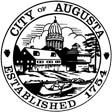 |
| Main page • Countries of North and South Americas • Cities of the United States • List of cities of Maine |
| Robinson Rd, CB 13862 Nassau, NP, The Bahamas |
